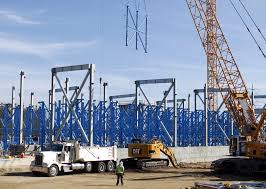How Desalination Company Can End Water Scarcity

Desalination is not a new technology as it has existed for more than 20 years. Desalination was first used in producing clean water in the Middle Eastern countries. Over the two decades, the desalination technology has been improved to become more efficient in producing high quality drinking water and the cost is lowered. In the past, desalination technology is only installed in boats and ships to produce clean water. Equipment used in the desalination process have been improved to become increasingly efficient with lesser energy being consumed.
It used to take 5 kWh of energy to produce a cubic meter of clean water many years ago but it only take 3 kWh energy to produce a cubic meter of clean water today. With the advancement in desalination technology, many large scale desalination plants have been built. The main cost of building a desalination company is the construction cost of the infrastructure buildings and pipes and vessels. The energy consumption is also an important part of the desalination cost. There are two main methods to carry out seawater desalination including distillation and reverse osmosis.
Distillation relies on water evaporation to get rid of the salt from the sea water. The earth is the largest distillation plant as the heat from the sun evaporate the water and leaves behind the salt in the ocean water. The evaporated water is transformed into rain or snow precipitation that does not contain salt. The problem is that some areas on earth are dry and don’t get a lot of rain water. As a result, the community who live in these dry areas lack access to fresh water which leaves them to using desalination as the only method to get clean water.
Reverse osmosis desalination is based on the reversing of the osmosis process. The sea water must first go through the pre-treatment filters before it is being pumped to the reverse osmosis building. Some wastes will be left behind after the water has been pumped into the reverse osmosis building. In reverses osmosis, thin polymer sheets that function as membrane are used to filter out the tiny particles in the sea water. The water is moved to the other container with the help of the high pressure forces produced by the pressure vessels.
The presser vessels is able to produce a high pressure of at least 30 bar. More than 90% of the salt can be removed from the sea water. Spiral wound elements are installed in the pressure vessels in order to face the osmotic pressure and transfer the water into another tank via the microscopic holes in the membranes. The pressure exchanger will help to recover some of the energy that is used in carrying out the reverse osmosis desalination process.
In the final stage, they will add fluoride and several types of minerals to ensure that the water meets the quality standard of the government. The water will also be disinfected from bacteria before it is being stored in the water holding tank.
